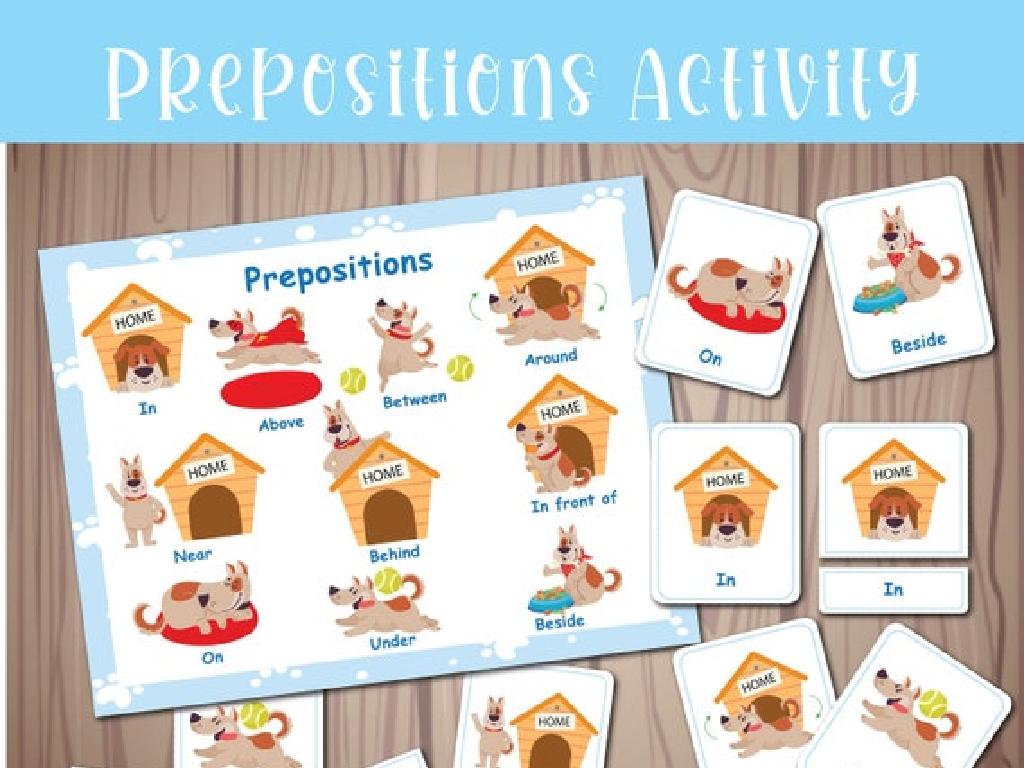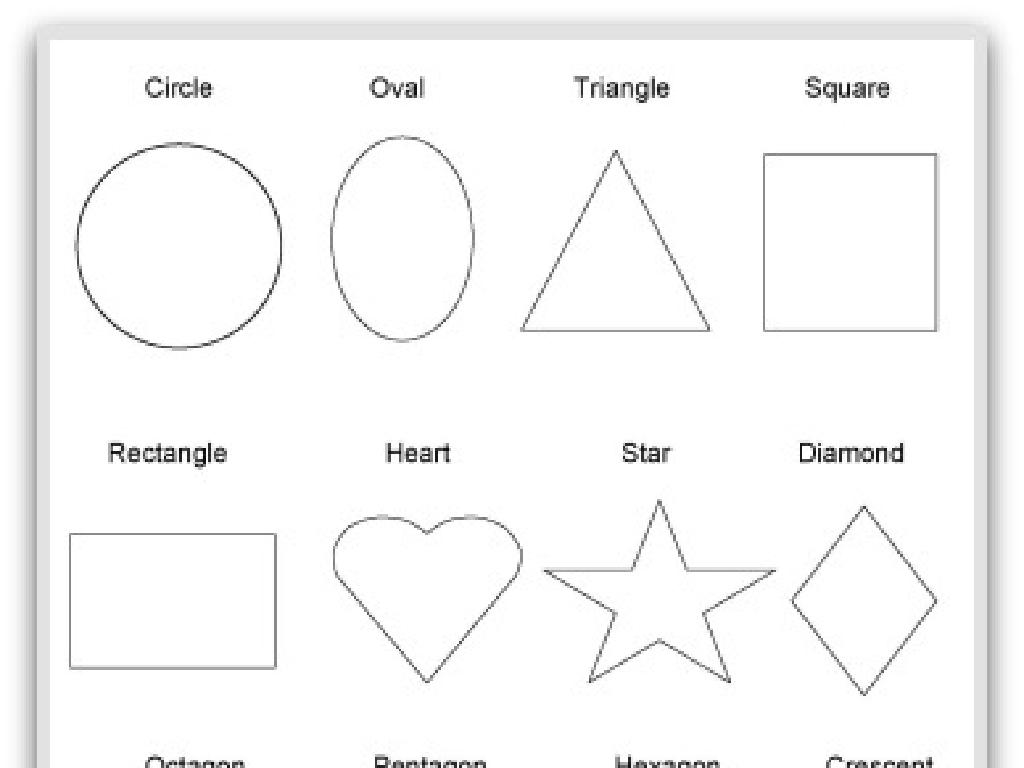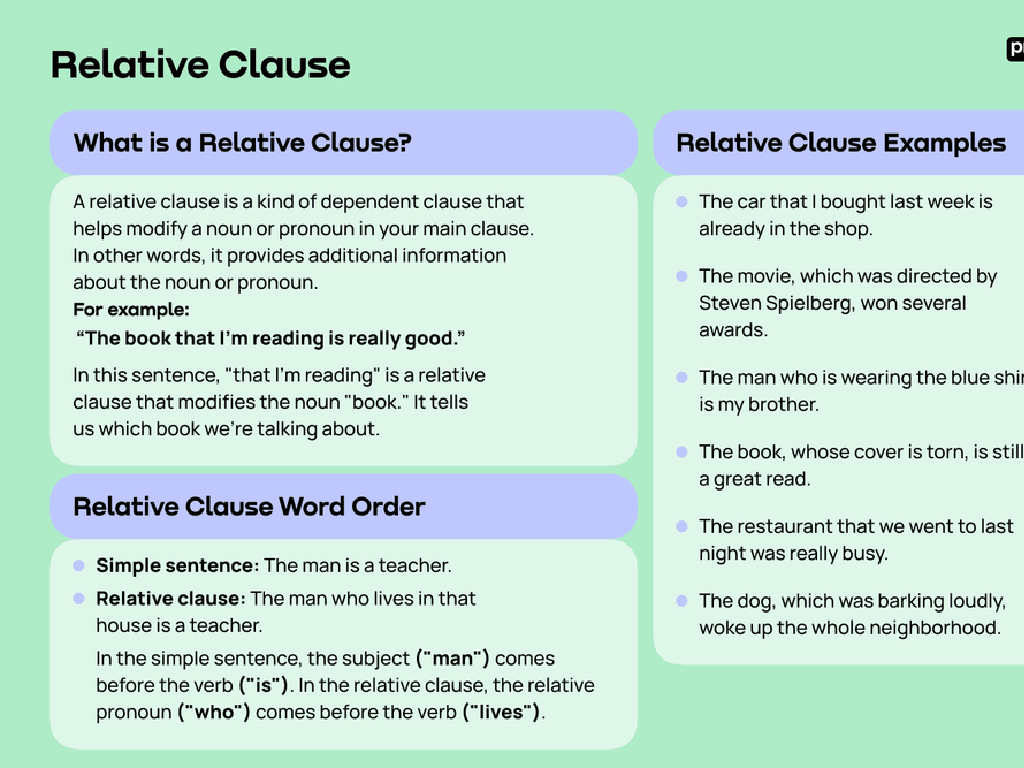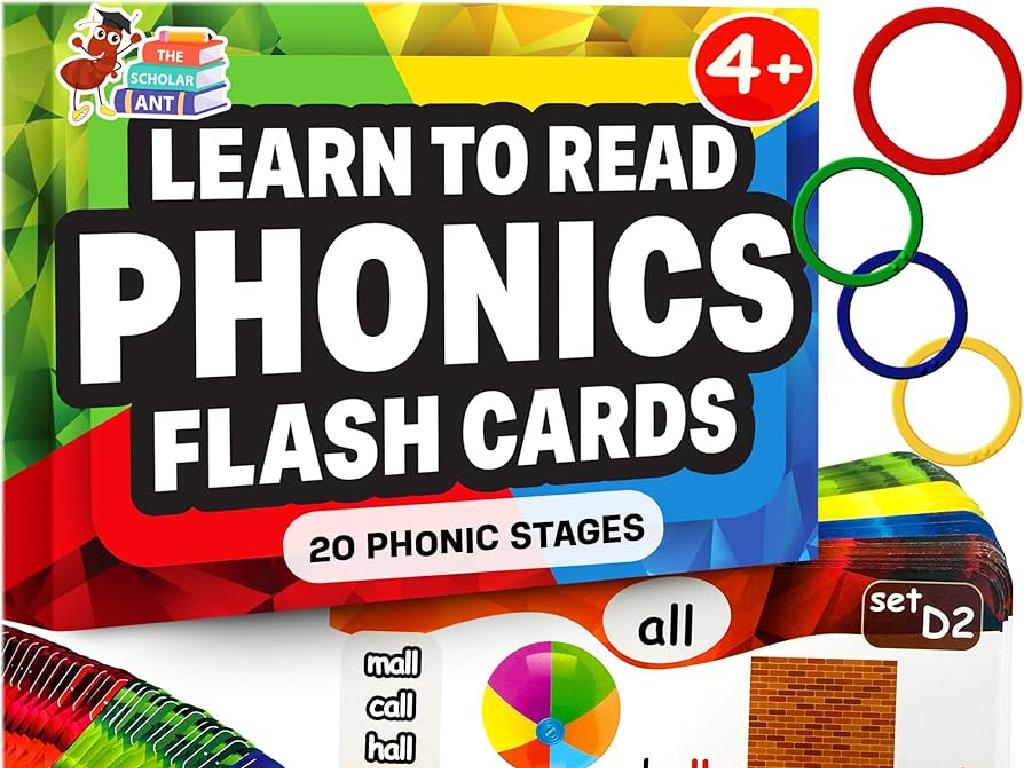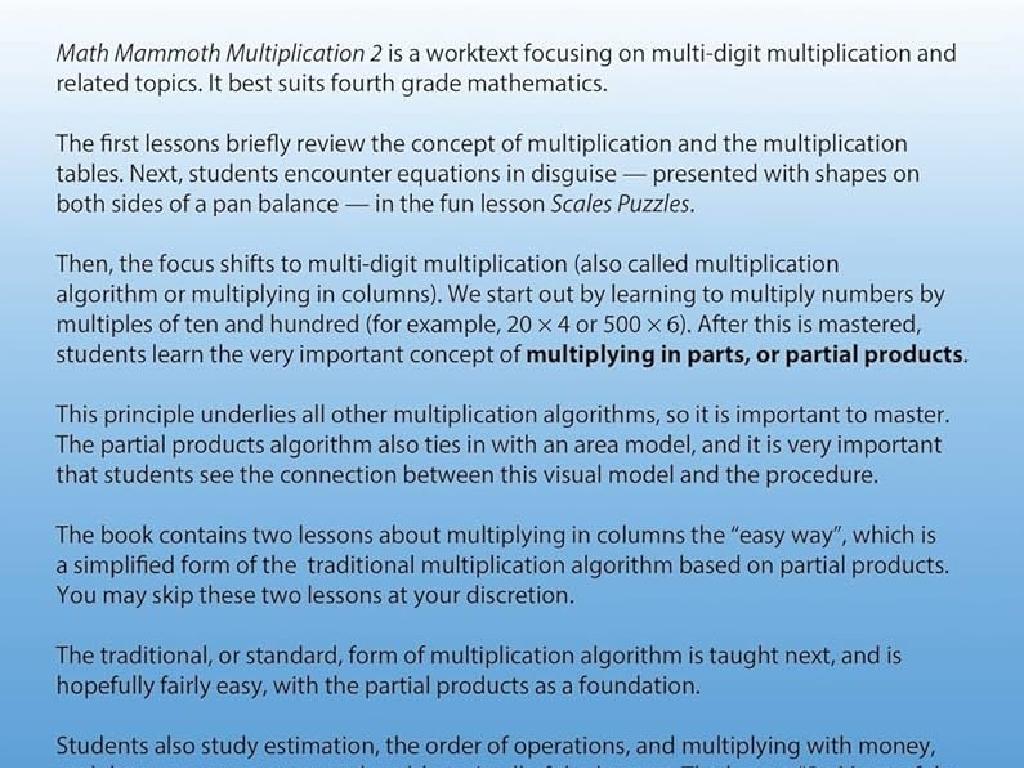Commas With A Series
Subject: Language arts
Grade: Third grade
Topic: Punctuation
Please LOG IN to download the presentation. Access is available to registered users only.
View More Content
Commas in a Series: Punctuation Power
– Punctuation marks help us read
– Commas in a series list items
– For example: I like apples, oranges, and bananas.
– Commas show small breaks in sentences
– Without commas: I like apples oranges and bananas.
– They make our writing clear
|
This slide introduces the concept of using commas in a series to create clarity in writing. Punctuation marks are like road signs for reading; they guide us on when to pause, stop, or express excitement. Commas, in particular, help us separate items in a list, which prevents confusion. Without commas, sentences can become jumbled and difficult to understand. During the lesson, emphasize the importance of commas by showing how sentences can be misinterpreted without them. Practice with the class by writing sentences on the board and having students insert commas where necessary.
Understanding Commas in a Series
– What is a series?
– A series is a list of 3 or more items, like apples, bananas, oranges.
– Series can be words, phrases, or clauses
– For example: running, jumping, playing or in the morning, at noon, at night.
– Commas separate items in a series
– We place a comma between each item: cats, dogs, birds.
– Practice using commas correctly
|
This slide introduces the concept of a series and how commas are used to separate items within a series. It’s important for students to understand that a series can consist of words, phrases, or clauses. Provide clear examples for each type of series. Emphasize the use of commas as a way to clarify meaning and avoid confusion in writing. After explaining, engage the students with practice sentences where they have to place commas in series correctly. This will help reinforce their understanding and application of the rule.
Commas in Action: Making Lists Clear
– Sentence without commas
– Example: I like apples oranges and bananas
– Sentence with commas
– Example: I like apples, oranges, and bananas
– Commas add clarity
– Commas separate items to avoid confusion
– Practice using commas
|
This slide is aimed at helping third-grade students understand the importance of using commas in a series to list items clearly. Start by showing the sentence without commas and ask the students how it sounds when read aloud. Then, present the sentence with commas and discuss how the commas help to separate the items, making the sentence easier to understand. Emphasize that commas act like a pause to help us see the different items in a list. Encourage students to come up with their own lists and write them down with and without commas to see the difference. This will prepare them for a class activity where they will practice using commas in their writing.
Commas in a Series
– Use commas to separate items
– In a list, like apples, bananas, oranges, use commas to show each item.
– Place a comma before the final ‘and’
– In ‘cats, dogs, and birds’, the comma before ‘and’ is the Oxford comma.
– The Oxford comma is optional
– Sometimes you can leave it out, but it can help make things clearer.
– Oxford comma adds clarity
– It helps avoid confusion in sentences with complex lists.
|
This slide introduces the rules for using commas in a series, which is a fundamental concept in punctuation for third graders. Emphasize the use of commas to separate individual items in a list. Explain the Oxford comma and its role before the conjunction ‘and’ in a series. Discuss how it is optional but can often add clarity, especially in sentences with lists that could be misunderstood. Provide examples with and without the Oxford comma to illustrate the difference. Encourage students to practice by writing their own lists and deciding whether to use the Oxford comma.
Let’s Practice Using Commas!
– Identify items in a series
– Spot where commas are missing
– Add commas to the series
– Practice with an example
– ‘I need to pack socks, toothpaste, and a towel for my trip.’
|
This slide is an interactive class activity designed to help students practice using commas in a series. Start by explaining that when we list items, we separate them with commas to make our writing clear. Present the sentence without commas and ask the students to identify the series of items that need to be separated. Then, guide them to spot where the commas are missing. Afterward, work together as a class to add the commas in the correct places. Use the example provided to demonstrate how the sentence should look once the commas are added. Encourage students to come up with their own sentences and practice placing commas. This activity will reinforce the concept and ensure they understand how to use commas in a series.
Your Turn to Write: Favorite Foods
– Write a sentence about favorite foods
– Use commas to list each food
– For example: I love pizza, burgers, and pasta.
– Include the Oxford comma
– The Oxford comma comes before ‘and’ or ‘or’ in a list
– Check your sentence for mistakes
|
This slide prompts students to practice using commas in a series by writing about something familiar and enjoyable: their favorite foods. Encourage them to think of at least three foods they love and write them in a list within a sentence, using commas to separate each item. Remind them about the Oxford comma, which is the last comma before the conjunction ‘and’ or ‘or’ in their list. After writing, they should review their sentence to ensure they’ve used commas correctly. This exercise will help reinforce their understanding of how to use commas in a series and the importance of proofreading their work.
Class Activity: Comma Art
– Create a colorful list with pictures
– Choose any theme like fruits, animals, or hobbies
– Use commas in your series artwork
– Remember, commas separate items like ‘apple, banana, cherry’
– Present your comma art to the class
– Share your artwork and explain your comma use
|
This activity is designed to help students understand the use of commas in a series through a creative and engaging art project. Students will select a theme and create a list of related items, using commas to separate each element. They will then illustrate their list with colorful pictures. This hands-on approach reinforces the concept of series and comma usage. Teachers should provide examples and assist students in understanding how commas change the meaning of a series. Encourage students to be creative and have fun with their artwork. After completing their comma art, each student will have the opportunity to present their work to the class, further reinforcing their understanding of the concept.
Commas in a Series: Review & Practice
– Why use commas in a series?
Commas separate items to make the list clear.
– Commas help the reader
Commas show pauses, making sentences easier to understand.
– Practice using commas
Let’s try writing some lists with commas together!
– Keep writing with commas!
|
As we wrap up, remind students that commas in a series help to separate items, making it easier for readers to see each distinct part of a list. Emphasize that using commas correctly can change the meaning of a sentence and make it more enjoyable to read. Encourage students to practice by writing their own lists or adding commas to existing sentences. Provide examples and have them correct sentences that are missing commas. Celebrate their progress and remind them that practice is key to mastering punctuation.

